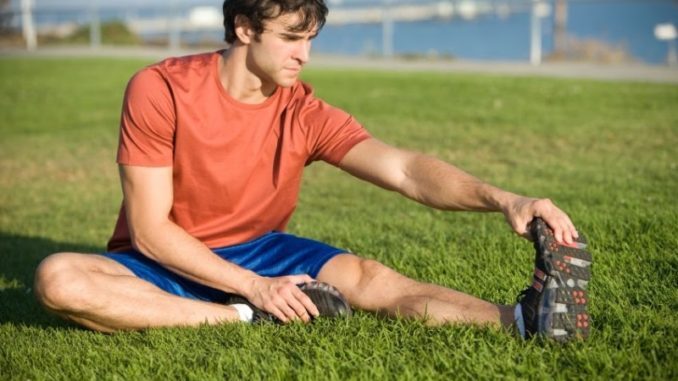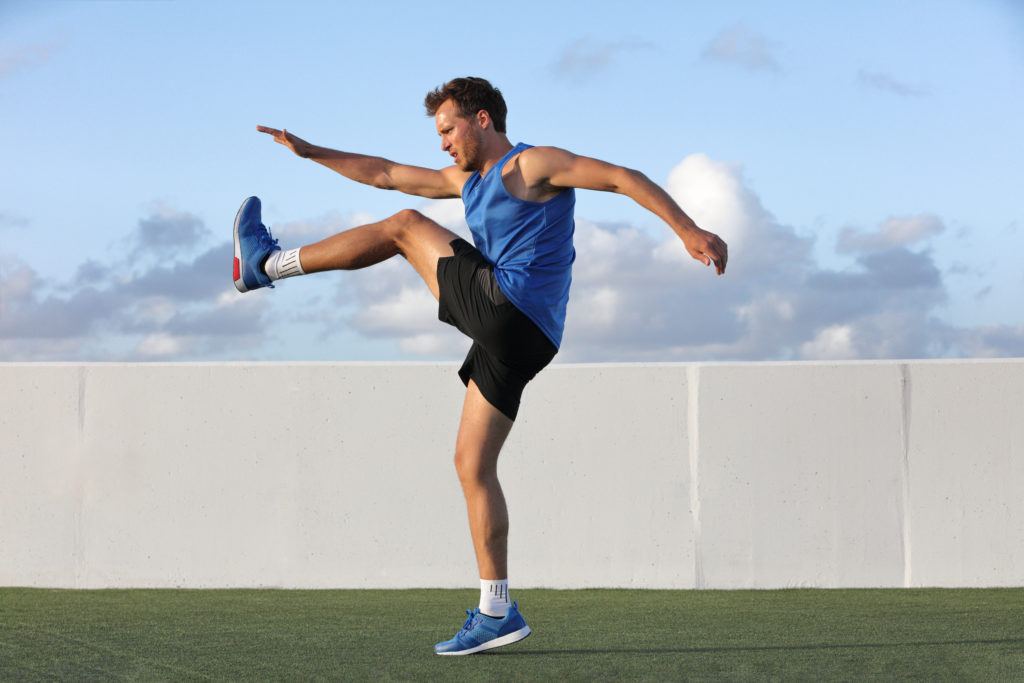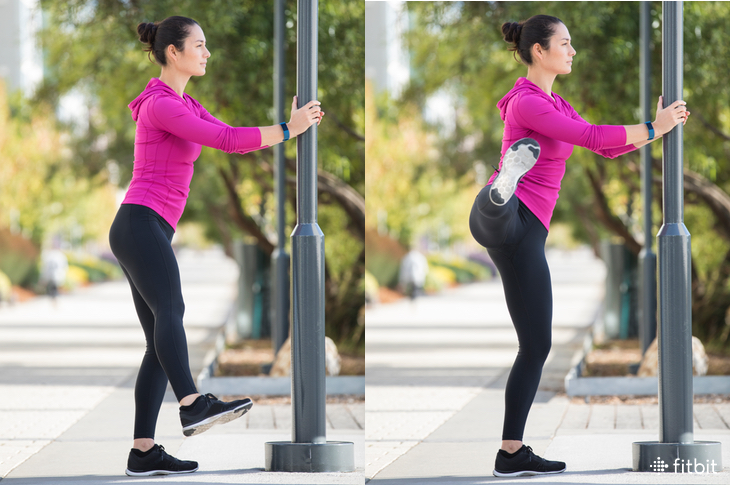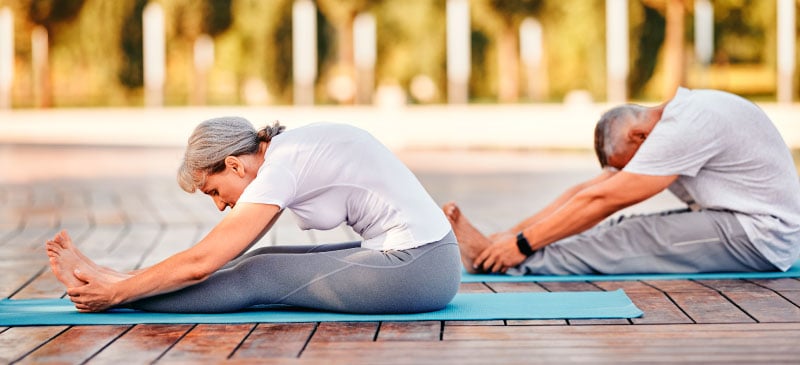
Stretching is a crucial part of any fitness routine, helping us stay flexible and prevent injuries. But there’s a bit of a debate when it comes to stretching techniques – Dynamic vs. Static Stretching!
Some say dynamic stretching is the way to go, while others swear by static stretching. So, what’s the deal?
To make the best choice for your fitness journey, you first need to understand the differences between dynamic and static stretching. And also when to do which one.
Let’s find out!
Dynamic Stretching: Stretch as You Move

What is Dynamic Stretching?
Dynamic stretching is used to warm up your body and prepare it for physical activity by increasing blood flow and muscle flexibility. It involves active, controlled movements that take your muscles and joints through a full range of motion.
Dynamic stretches are designed to take a joint or a muscle through a challenging and repetitive motion, moving a body part further with each repetition.
What is the Best Time for Dynamic Stretching? Before or After a Workout?
Dynamic stretches are not held for long periods and are typically part of a pre-workout routine to reduce the risk of injury and improve performance.
It is best done before an exercise to prepare the joints for movement and muscles for optimal activation.
What is an Example of Dynamic Stretching?
A common example of a dynamic stretch is the leg swing.
Leg swings are an effective dynamic stretch for loosening up the hip and leg muscles, making them a great choice for warming up before activities that involve running, kicking, or other leg movements.

To perform a leg swing, follow these steps:
- Find a stable surface or support, like a wall or railing, to hold onto for balance.
- Stand next to the support with your feet hip-width apart.
- Swing one leg forward and backward in a controlled manner.
- Start with small swings and gradually increase the height and range of motion as your muscles warm up.
- Repeat the swings for about 10-15 seconds on each leg.
The Benefits of Dynamic Stretching
Dynamic stretching offers a range of advantages that make it an essential component of any warm-up routine. Here are some of the key benefits (1):
- Rapid Warm-Up: Dynamic stretching is a quick and efficient way to warm up your body, even faster than engaging in low-intensity aerobic activities
- Improved Blood Flow: Dynamic stretching increases blood flow to the muscles, providing them with essential nutrients and oxygen. This enhanced circulation helps prepare your body for physical activity by raising your heart rate and core body temperature.
- Enhanced Flexibility: By actively taking your muscles and joints through a full range of motion, dynamic stretching gradually increases flexibility. This improved flexibility allows for more fluid movements during your workout, reducing the risk of strains or injuries.
- Better Range of Motion: Dynamic stretches can help improve the range of motion around your joints. This is particularly beneficial for activities that require a wide range of motion, such as sports and weightlifting.
- Increased Muscle Activation: Dynamic stretching helps activate and engage the muscles you’ll be using during your exercise routine. This primes them for action, making your movements more efficient and powerful.
- Injury Prevention: When done correctly, dynamic stretching can help reduce the risk of injury. By preparing your body for the specific movements you’ll be performing, it minimizes the chances of straining or overloading your muscles and joints.
- Enhanced Athletic Performance: Dynamic stretching is especially effective for athletes as it improves kinesthetic awareness. This means your body becomes more accustomed to the movements and positions required in your sport, ultimately enhancing your athletic performance.
Incorporating dynamic stretching into your warm-up routine can lead to safer, more effective workouts and contribute to your overall physical well-being.
Static Stretching: Stretch and Hold

What is Static Stretching?
Static stretching is a stretching technique in which you hold a specific position, typically with the muscle or muscle group being stretched at its maximal length, for a set period of time without any movement or bouncing.
During static stretching, you aim to feel a gentle, sustained pull or tension in the targeted muscle. This method is commonly used to increase overall flexibility and relax the muscles.
Various techniques are used in static stretching to gradually lengthen a muscle to an elongated position, often to the point of discomfort, and hold that position for about 30 seconds.
What is the Best Time for Static Stretching? Before or After a Workout?
Static stretching is best done after a workout to help the muscles cool down and alleviate any muscle tightness that may have developed during exercise.
However, if you are planning on doing some intense exercise, it is better to start with dynamic stretching or light aerobic activity and then do some static stretching.
The best time to stretch is when the muscles are warm and pliable. If the muscles have not been properly warmed up, you put them at risk for tearing, cramping, etc.
What is an Example of Static Stretching?
A classic example of a static stretch is the “hamstring stretch.” This static stretch is excellent for increasing hamstring flexibility and can be performed as part of a post-workout cool-down routine or during a general flexibility training session.

Here’s how you can perform this static hamstring stretch:
- Sit on the floor with your legs extended straight in front of you.
- Keep your back straight, and your feet together.
- Slowly reach forward, keeping your back straight, and gently grasp your toes, ankles, or shins, depending on your flexibility.
- Hold this stretched position for about 15-30 seconds, or longer if you’re comfortable.
- As you hold the stretch, focus on feeling a gentle pull in your hamstrings, the muscles on the back of your thighs.
- Relax and return to the starting position.
Remember not to bounce or force the stretch, as the key to static stretching is to hold the position without movement to allow the muscle to lengthen gradually.
Check out more examples of static stretching: 12 Best Static Stretches for your Full Body
The Benefits of Static Stretching
Here are some of the key benefits of static stretching:
- Enhances Flexibility: Static stretching is highly effective at increasing overall flexibility by gradually elongating the muscles and connective tissues. This can lead to improved joint range of motion (2).
- Muscle Relaxation: Holding static stretches promotes muscle relaxation, reducing muscle tension and promoting a sense of well-being. It can be beneficial for individuals experiencing muscle tightness or discomfort.
- Reduces Muscle Soreness: Static stretching is typically used as part of a cool-down routine after exercise, helping to alleviate muscle soreness and improve recovery by increasing blood circulation to the muscles.
- Stress Reduction: The focused, deep-breathing component of static stretching can have a calming effect, reducing stress and promoting relaxation.
- Improved Posture and Balance: Static stretching can address muscle imbalances and posture issues, helping to correct and maintain better posture and balance.
- Reduces Risk of Injury: Regular static stretching can help prevent injuries by maintaining or increasing muscle and joint flexibility, which is especially important in activities involving sudden or extreme movements.
FAQs on Dynamic vs. Static Stretching
What is the difference between dynamic and static stretching?
Unlike dynamic stretching, which involves active movements and is typically used as a warm-up, static stretching is all about holding a stretch position to promote relaxation and lengthening of the muscle fibers.
What are the 4 types of stretching?
There are four primary types of stretching:
- Dynamic Stretching: As explained above, it involves active movements.
- Static Stretching: Holding a stretch position without bouncing.
- Ballistic Stretching: Involves bouncing during a stretch and is generally not recommended due to the increased risk of injury.
- Proprioceptive Neuromuscular Facilitation (PNF): A more advanced technique that involves a combination of stretching and contraction of the muscle being targeted. PNF stretching is often done with a partner or using resistance, and it’s effective for increasing flexibility.
Dynamic vs. Static Stretching: Should you stretch before a workout or after it?
You should customize your stretching routine to your specific needs and goals. In general, dynamic stretching is recommended before a workout to warm up the muscles, while static stretching is best performed after a workout to enhance flexibility and aid in muscle recovery.
If your workout involves activities that require explosive or dynamic movements, like sprinting or weightlifting, prioritize dynamic stretching in your warm-up. For activities that focus on improving flexibility, like yoga, static stretching can be integrated into your routine.
Does stretching reduce your chances of injury?
Stretching can reduce your chances of injury when done correctly as part of a balanced fitness routine.
Stretching helps improve flexibility and range of motion, which can enhance your physical performance and reduce the risk of certain types of injuries. It also helps in alleviating muscle tension and promoting better muscle balance.
Does stretching make you more prone to injury?
No, stretching when done correctly does not make you more prone to injury; it can actually reduce the risk of injury by improving flexibility and range of motion.
However, if done improperly or excessively, stretching can potentially increase the risk of injury. Overstretching or forcing your body into extreme positions can lead to strains, sprains, or even muscle tears. It’s essential to perform stretching exercises with proper technique and within a safe range of motion.
The Take Away
Static and Dynamic stretching both have a place in the warm-up before a workout, but it depends on the type and intensity of the workout or sport you are going to perform. It’s best to perform just static stretches after a workout to cool down.
There are specific steps to performing a warm-up – you need to do joint rotations first, then light aerobic activity before proceeding to static stretching, and then dynamic stretching if needed. You can find out more about this in the following article.
